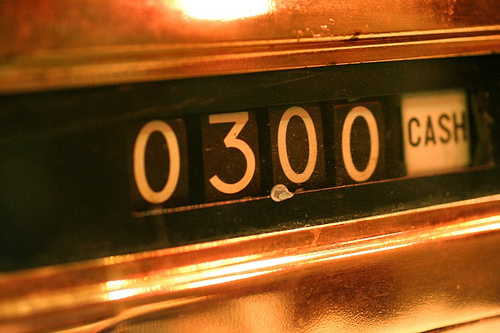
On walking into a used car lot, the experienced buyer will do no more than cast a vaguely disparaging glance at the price tag. His or her first action will instead be a stern request that the bonnet be raised aloft so that the engine can be scrutinised. I think it should be similar when you look at a share and, especially, your share portfolio. Prices are often a long way from a realistic valuation of the vehicle’s true value and may seem to be provided for the purpose of amusement only. Earnings are a different matter; sometimes a powerful motor may lurk inside a seemingly knackered old banger!
Speaking of amusement, I try to think of my portfolio as a little conglomerate, which comprises a number of companies earning profits in different sectors. Instead of getting caught up thinking about its current market valuation, which unfortunately can be volatile, I try to remember that, if you do not want to sell, that market valuation doesn’t matter. What does matter is what the portfolio is earning, because it is those earnings that are being reinvested to fuel future growth, buybacks and dividends.
Another reason I try to make myself think about earnings before selling price is that there are a lot more of them than you see in the dividend payment, and that is something which is all too easy to forget. Dividends, at times of sharp market falls, can appear a pitifully inadequate compensation for your tumbling portfolio value and having to endure one of those dreaded attacks-of-the-zeros. However, if you add the dividend received to the usually invisible portion of earnings retained on your behalf, then you realise that, although your company may be selling cheaply, it is still earning plenty of profits on your behalf and those profits haven’t disappeared. The habit provides encouragement for the anxious at times of plunging markets and therefore makes you less likely to become Wall Street road kill. It keeps volatility in perspective, which is important because it is volatility that leads to FEAR, and fear is the main reason that investors panic and sell at precisely the wrong times. Indeed a study released by DALBAR last year found that, although over the 20 years to the end of 2012, the S&P 500 had earned an average of 8.21% annually, the average equity fund investor had to make do with 4.25%. A lot of small potatoes were left on the table.
For me, therefore, the most useful value to monitor in my portfolio is its look-through earnings. Look-through earnings include the retained (that is, reinvested) earnings and provide that necessary encouragement at times of stress. By calculating these, you can also compare, in an idle moment, what your investments are earning relative to what you are earning in whatever dull office it is you happen to ply your trade. It reminds you that your portfolio is an accumulation of real businesses earning real profits on your behalf and, furthermore, it can be surprising how quickly your investment earnings will catch up with your pay cheques. (Although maybe it shouldn’t surprise because with shares you are an owner, not an employee. Owners always seem to do better!)
Calculating your portfolio’s monthly look-through earnings is easy. All you need is the last full year’s reported earnings per share for each company, the total number of shares you hold in each company, and that’s it. For example, if you had roughly equal-sized positions, to a total of about £30,000, in Rolls Royce, Diageo, and Imperial Tobacco, then it would equate to about £170 per month in look-through earnings. Part of that would be paid out to you as a dividend, but the majority of it would be reinvested on your behalf.
| Company | EPS | No. Shares | Price (p) | Position (£) | Look-Through Earnings (£) |
| Rolls Royce | 73.26 | 900 | 1077 | 9693 | 659.34 |
| Diageo | 99.3 | 550 | 1868 | 10274 | 546.15 |
| Imperial Tobacco | 210.7 | 400 | 2432 | 9782 | 842.8 |
To calculate your portfolio’s monthly earnings, you just sum the annual look-through earnings for all of your shares and then divide that by 12.
